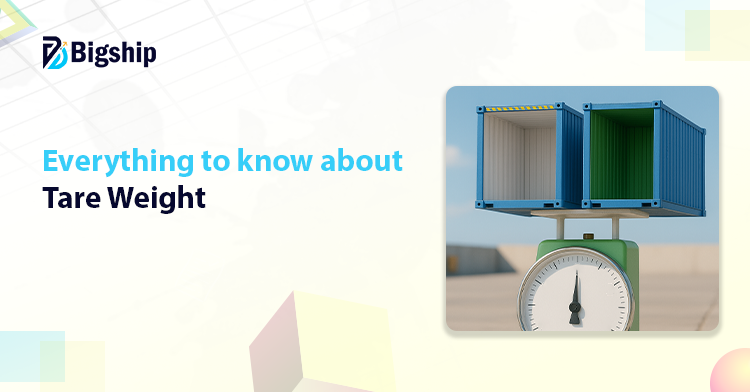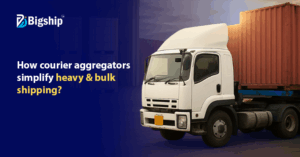Many people get confused between tare weight meaning and net weight vs gross weight. Tare weight simply means the weight of the empty container or packaging. It is the invisible number that bridges the gap between net weight vs gross weight.
Tare weight is an important factor in determining the real weight of shipments. Businesses use it to avoid errors in billing, shipping, and trading. Correct tare weight ensures fairness, accuracy, and compliance in every shipment.

In this blog, we’ll cover everything about tare weight, including its meaning, calculation, and benefits.
What does tare weight mean?
Tare weight may sound technical, but it’s actually quite simple. It means the weight of an empty container or vehicle before anything is added inside. Imagine a truck without goods, a box without products, or a bottle without water, that empty weight is called tare weight. It’s the base weight before the real stuff goes in.
When something is shipped, the total weight includes both the product and its packaging. To find the real product weight, the tare weight is subtracted. This helps in fair pricing, proper billing, and avoiding extra costs. It’s a small detail that makes a big difference in transport and trade.
Importance of tare weight
Tare weight plays an important role in keeping trade fair, transport safe, and costs transparent. Here’s why tare weight holds so much importance:
- It helps identify the true product weight, so customers pay only for what’s inside and not the container.
- In shipping and logistics, tare weight prevents overloading by showing how much extra cargo a vehicle can carry safely.
- Companies use tare weight to measure materials correctly, manage resources, and avoid unnecessary waste.
- Truck drivers and transporters must consider tare weight to stay within road weight limits and avoid penalties.
- By separating packaging from product weight, tare weight ensures transparent and trustworthy transactions.
- Accurate tare weight motivates the use of lighter, eco-friendly packaging to cut down on overall load and emissions.
Calculation of tare weight
Tare weight is essential in logistics and so is its calculation, especially when comparing gross weight vs net weight. As already mentioned above, tare weight refers to the weight of the container, packaging, or wrapping that holds the actual product. It’s what separates the total shipment weight from the weight of the goods themselves.
To calculate it, you simply find the difference between the gross weight and the net weight. The gross weight includes everything, the product, packaging, and container. While the net weight represents just the product.
Here’s the simple formula:
Tare Weight = Gross Weight – Net Weight
For instance, if a packed box weighs 20 kg (gross) and the product inside is 18 kg (net), the tare weight is 2 kg. This calculation helps businesses accurately determine shipping costs, avoid overcharges, and maintain transparency in freight operations.
What are the tools used to measure tare weight?
There are several tools and methods available to measure tare weight, ranging from simple to highly sophisticated, each suited for different scales of operations. Some of these tools are given below:
Digital Scales: These are widely used in retail stores, warehouses, and laboratories. They provide quick and precise readings for small to medium-sized packages.
Weighbridges: Ideal for heavy vehicles and large shipments, weighbridges can handle trucks and pallets. Weightbridges ensure that gross and net weight calculations are accurate at a large scale.
Automated Weighing Systems: These systems are found in manufacturing plants and they integrate with conveyors and packaging lines, delivering precise measurements without manual intervention.
Manual Scales: Traditional balance scales or spring scales are still used for small containers or when advanced technology isn’t available.
Specialized Container Scales: These are designed specifically to measure the tare of containers in shipping yards, often combined with sensors for real-time monitoring.
What are the benefits of tare weight?
Understanding and using accurate tare weight is more than a technical necessity as it offers practical benefits. Some of these benefits are mentioned below:
Cost Optimization: The knowledge of the exact tare weight ensures you are charged only for the goods being shipped. Overestimating leads to unnecessary shipping costs, while underestimating can result in penalties. Accurate calculations also allow better container space utilization, reducing wasted volume and improving overall efficiency.
Enhanced Fuel Efficiency: Lighter and correctly calculated loads consume less fuel. For transport companies, this not only lowers operational costs but also reduces environmental impact by minimizing carbon emissions.
Safety and Stability: Properly accounting for tare weight ensures balanced load distribution on trucks and cargo ships. This reduces the risk of accidents, tipping, or structural strain during transport.
Seamless International Trade: Precise tare weight is critical for customs documentation and taxation. It ensures shipments comply with global regulations, avoiding delays, fines, or cargo rejections.
Key Takeaways
- Tare weight is the weight of an empty container, packaging, or vehicle before adding any product inside.
- Tare weight bridges the gap between gross weight vs net weight.
- Accurate tare weight ensures customers pay only for the product, not the packaging.
- Correct tare weight avoids overpaying for shipping and optimizes container space usage.
Conclusion
Tare weight may look like a small detail, but it carries big importance in trade and logistics. It keeps calculations fair, ensures safe transport, and helps companies avoid costly mistakes. When businesses clearly know the difference between net weight vs gross weight, operations become smoother and more transparent. Every accurate tare weight entry adds value, reliability, and trust to the process.
FAQs
What is the tare weight?
Tare weight means the weight of an empty container or packaging before adding any product inside.
What is the formula to calculate tare weight?
The formula for Tare Weight is:
Tare Weight = Gross Weight – Net Weight.
How does tare weight affect logistics?
It helps avoid overloading, reduces costs, and maintains compliance with transport regulations.





